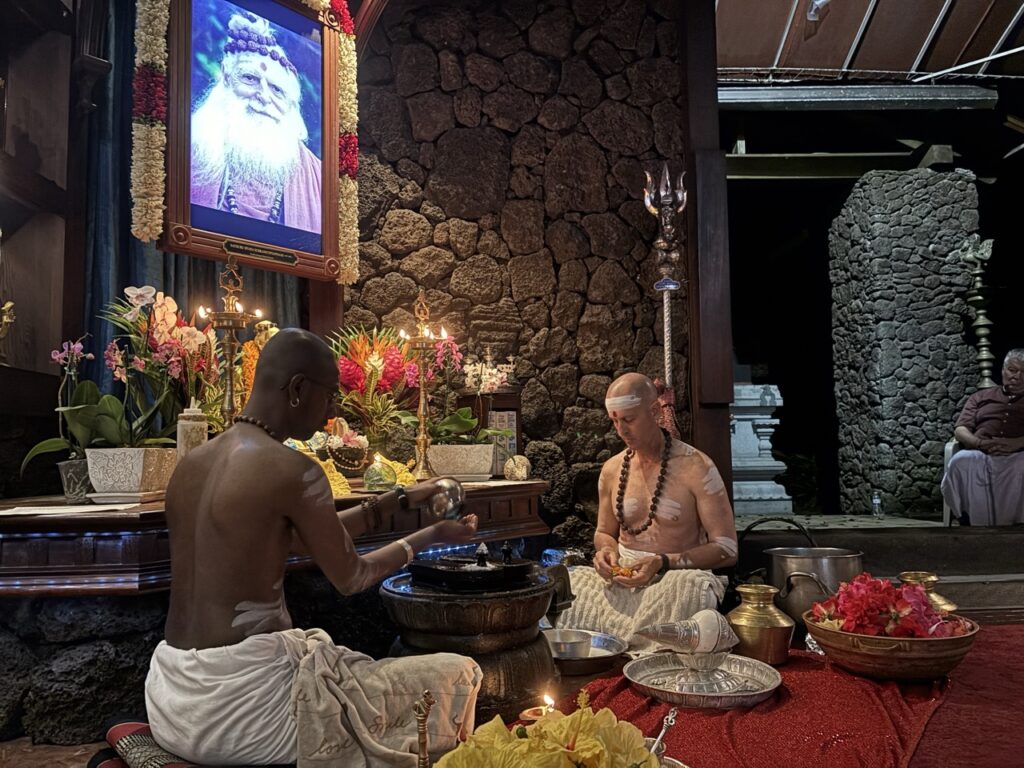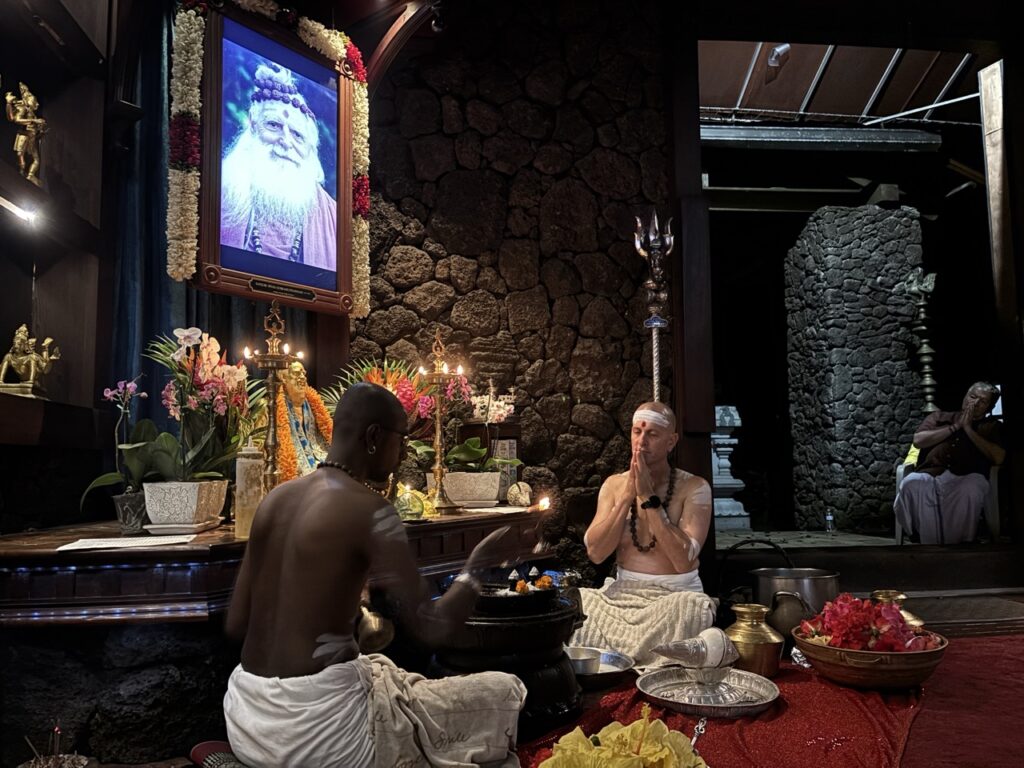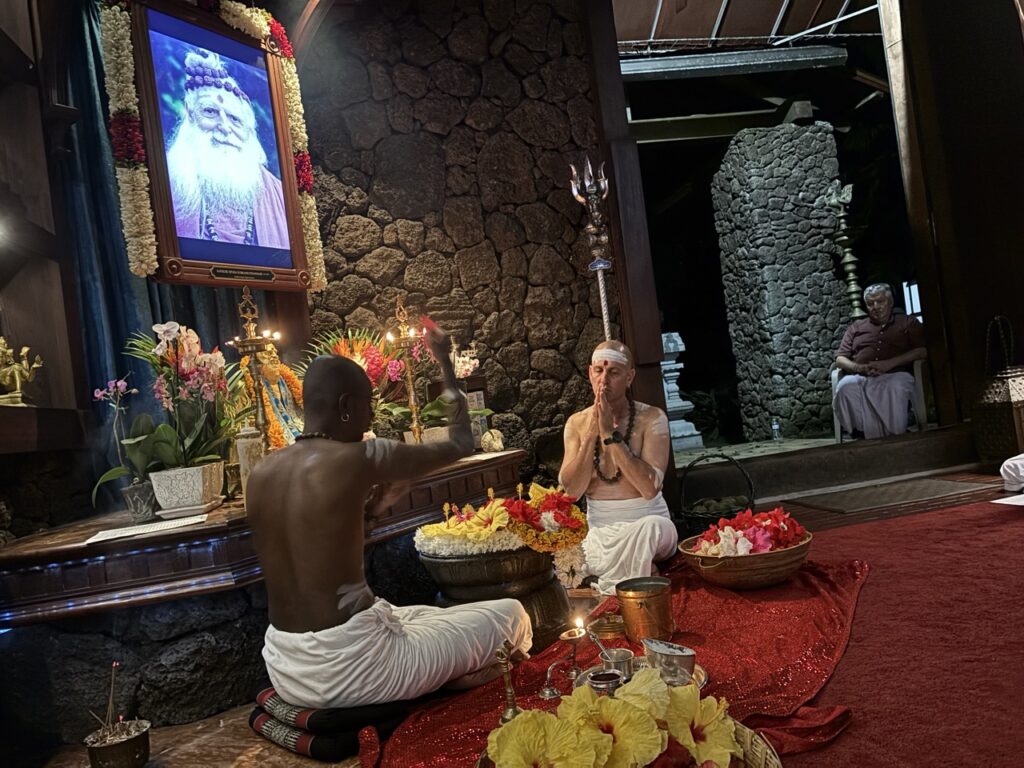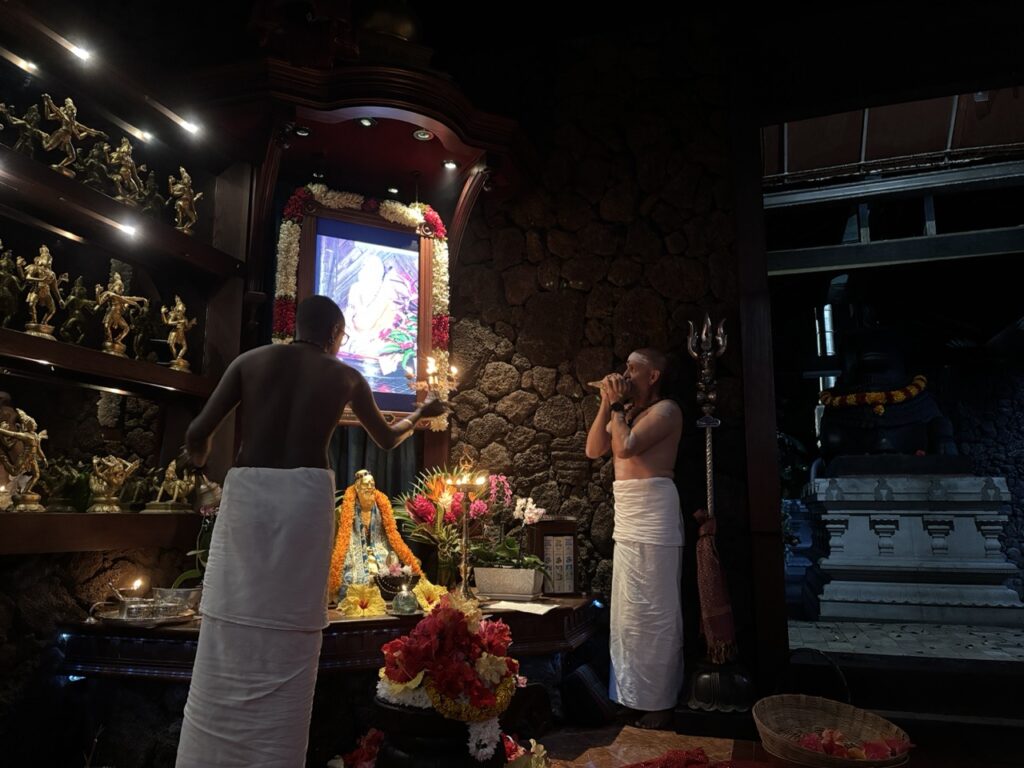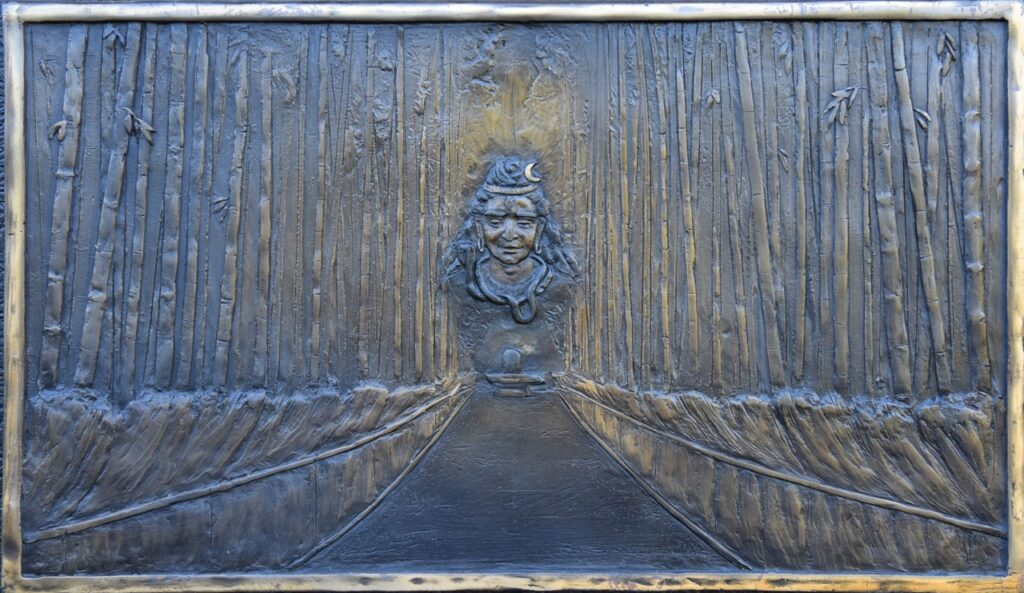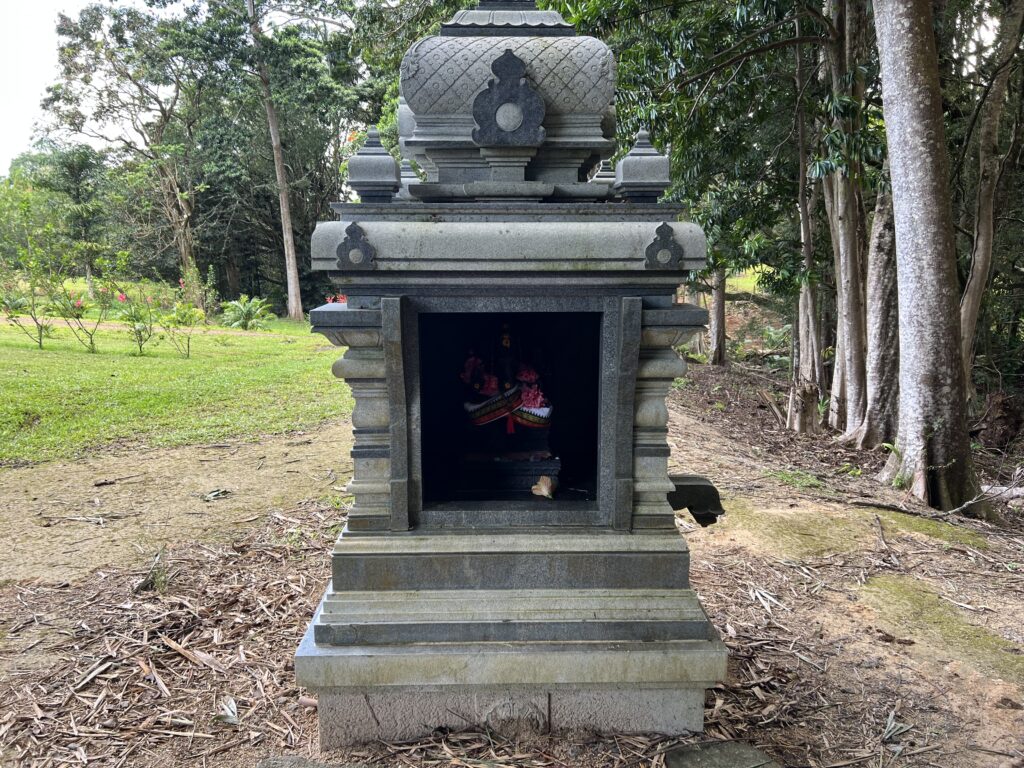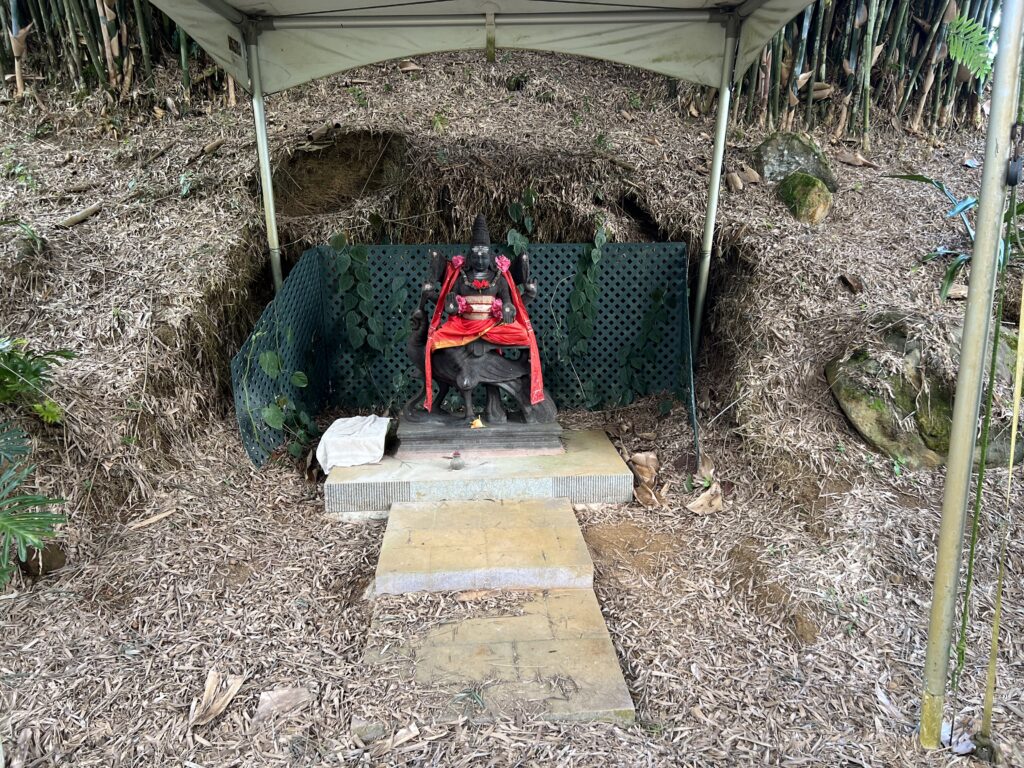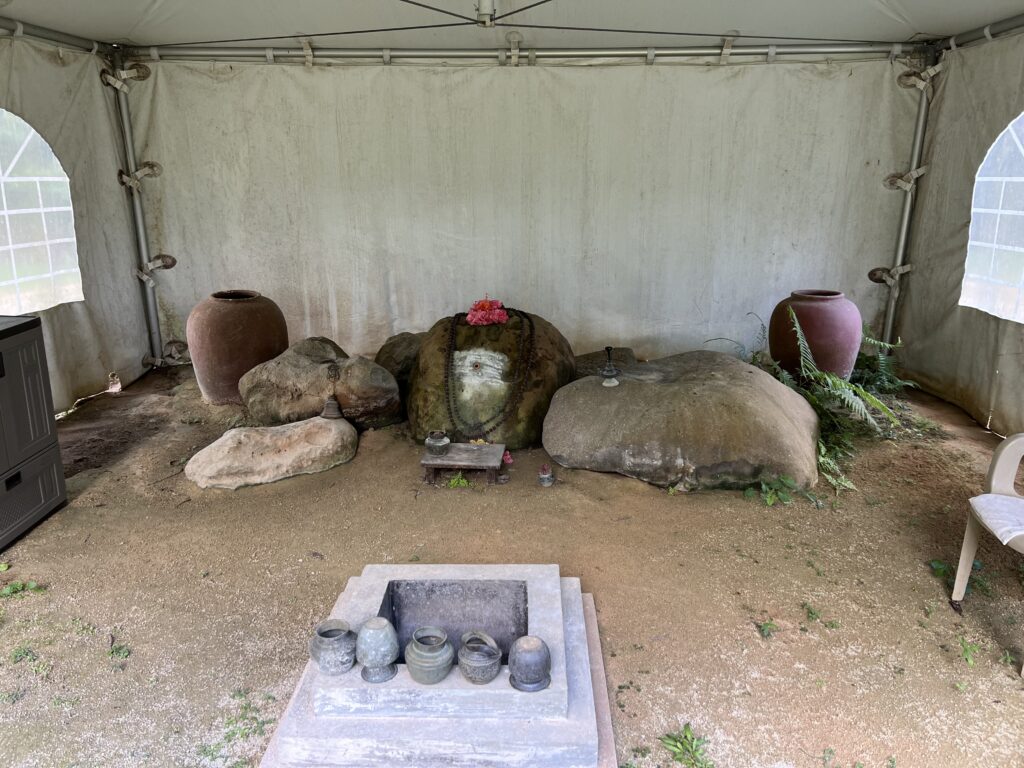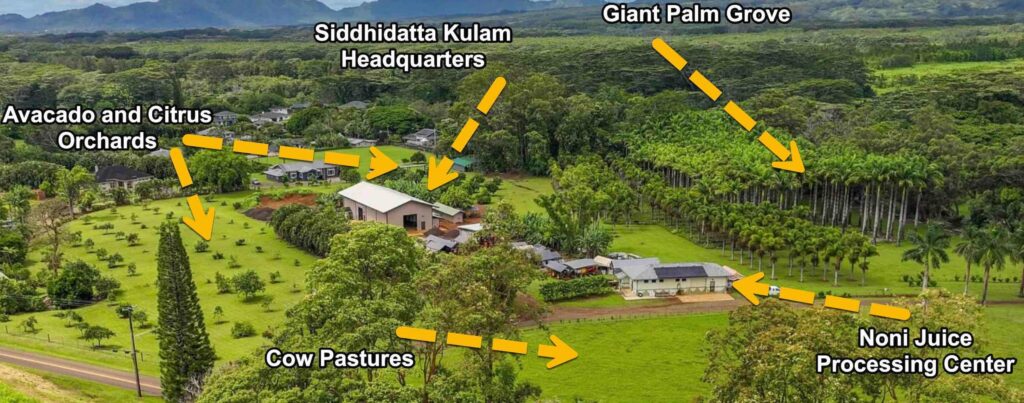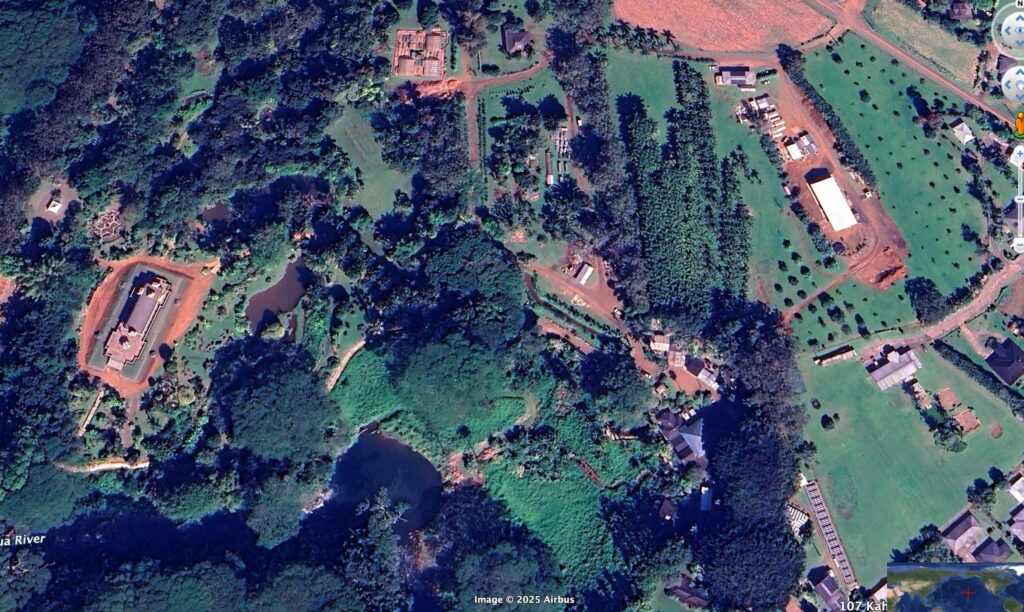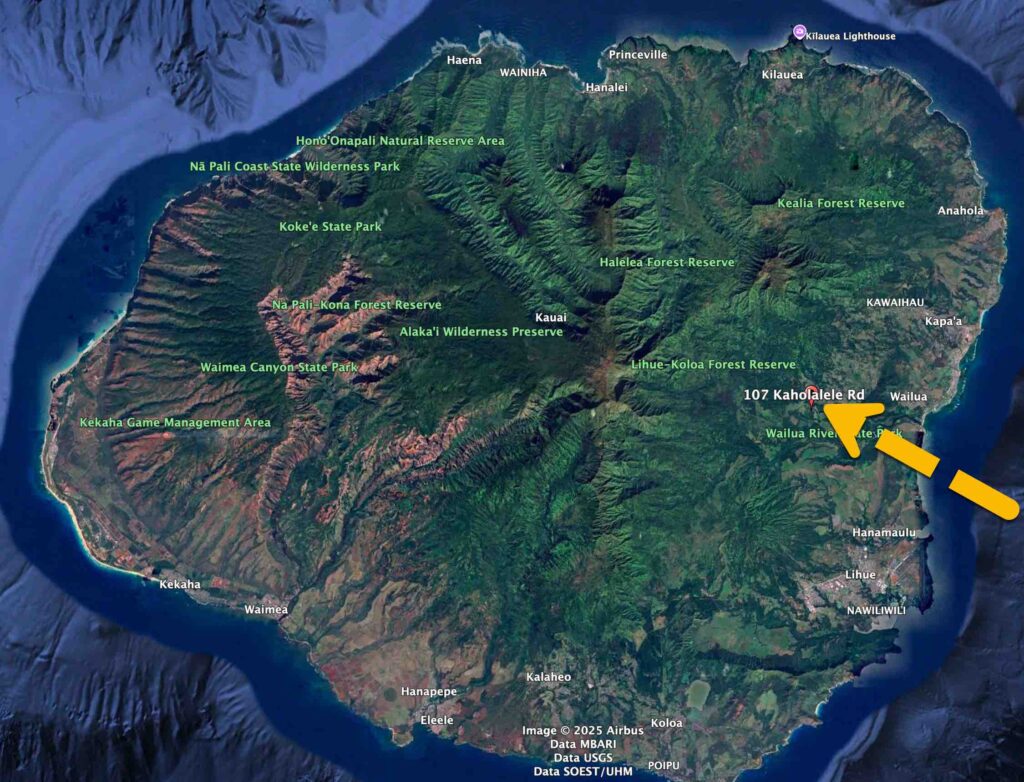Jai Ganesha!
With the discovery of the boulder in Gurudeva’s 1975 vision, San Mārga, the straight path to God, was created just west of Iraivan Temple. Worship of the sacred stone he found, known as a svayambhū Śivaliṅga, was commenced immediately at daily pūjā rites, and a master plan was unfolded from the devonic worlds.
Pilgrims to Iraivan begin their spiritual excursion to Iraivan in the Rudrāksha Forest, which Gurudeva planted in 1984. He wrote, “Being under the rudrāksha trees in this magical forest has hidden, sought-after healing powers, the key to helping aching hearts, the salve to soothe broken hearts, yearning hearts, sad hearts and ailing hearts.” On a knoll near the Rudrāksha Forest stands Lord Hanumān. Gurudeva asked for a small Iraivan Temple to be placed in His left hand, held aloft. Just as Hanumān brought the healing Sañjīvi mountain from the Himālayas to Sri Lanka, so He carried Iraivan from India to Kauai.
Walking south from the forest, visitors proceed through a bamboo corridor along San Mārga, the lush and tropical straight path to God, composed of three sections denoting the three worlds. The first is overseen by Lord Gaṇeśa, ruler of beginnings. Farther down, Lord Murugan, in the form of a 12-foot-tall Vel, resides atop a small hillock, overlooking the second world. Ringing a bell, pilgrims enter the third world, Śiva’s realm. From this point on, no other Deities are seen. It is all Śiva, nothing but Śiva. Gurudeva made this path perfectly straight to stress that we should go directly to God, avoiding distractions, walking past diversions, pitfalls and fascinations, ever keeping our mind on our goal, on Śiva’s Feet.
The path leads to the Svayambhū Śivaliṅga and beyond to the Wailua River and the entrance to Iraivan Temple. Gurudeva wrote, “When you begin the pilgrimage to Iraivan Temple, you drop off and dissolve the karmas of the past. Then, because of the direction the temple is facing, the temple gives a new start, a new impetus for a wonderful future. It is a boon-giving temple, a gift-giving temple, a life-giving temple, a wish-fulfilling temple.” Following San Mārga is both a sādhana and a metaphor of the inner path that leads to God.
